QA and Testing
Access the top 1% of LATAM tech talent within just 2 weeks. Reduce risk and enhance software quality with our comprehensive QA and testing services, ensuring higher standards and reliable performance.

Trusted by more than 100 companies across the globe:







QA and Testing Services We Provide
Manual Testing
Manual testing is a hands-on method that captures subtleties automation tools might overlook. By incorporating exploratory and acceptance testing, we identify and address bugs effectively. We also simulate real-world user interactions to ensure the final software aligns with user expectations.
Our comprehensive manual testing service includes a range of popular testing types, such as security, exploratory, ad-hoc, usability, localization, installation, error handling, and compatibility testing.
Automation Testing
Establish a robust production line for quality checks with our automated testing services. Our automation engineers utilize tools like Selenium and Appium to systematically execute test cases, providing consistent and rapid feedback. By automating repetitive tasks, we reduce manual effort, enhance software reliability, and expand test coverage.
Regression Testing
Think of regression testing as your safety net. We use tools like Selenium and frameworks like TestNG to verify that your software's core functionalities remain intact after updates.
This iterative process involves running a series of pre-defined test cases, leading to fewer glitches, consistent software quality, and reliable performance of existing features.
API Testing
Reliable APIs are crucial for modern applications. Rigorous API testing ensures your endpoints are functional, secure, and optimized for real-world demands. Using tools like Postman and REST Assured, we validate data flows, endpoint reliability, and performance under load, resulting in improved software compatibility and fewer system vulnerabilities.
Web and Mobile QA
In a landscape where users switch between high-end desktops and mid-range smartphones, your websites and apps must excel in appearance and performance across all browsers and devices. Our web and mobile QA service emphasizes responsive design and cross-platform compatibility to ensure a seamless user experience. Additionally, we conduct accessibility testing to ensure your software is accessible to users with disabilities.
Security Testing
Every day, new companies experience data breaches. Our security testing rigorously examines your software's defenses, analyzing vulnerabilities from a hacker's viewpoint.
Employing leading tools such as OWASP ZAP and Burp Suite, we meticulously assess your application for vulnerabilities, including SQL injection and cross-site scripting. Our objective is to ensure your software remains resilient against current and evolving security threats.
Performance Testing
With our load and endurance tests, we simulate “rush hour” scenarios to pinpoint performance bottlenecks, ensuring your application remains swift and responsive during traffic surges. Stress testing pushes your software to its limits, uncovering potential breaking points and helping you optimize for peak performance.
CASE STUDY
Better Trucks partnered with NetForemost to enhance its delivery services. Over two years, our dedicated teams improved API reliability, enabling faster, transparent deliveries and an enhanced customer experience.

Key Facts about Outsourcing QA and Testing
Often, internal teams are stretched thin or lack the specific tools needed for thorough testing. Outsourcing your software testing and QA can address these challenges, providing specialized expertise and enhancing product quality. Here are seven key benefits of outsourcing:
- Access Top-Tier Talent: Collaborate with specialized QA professionals who excel in automation and testing, ensuring your software remains robust, efficient, and up to industry standards.
- Improve Focus: By outsourcing, your in-house team can concentrate on core activities while dedicated QA experts handle testing and quality assurance more effectively.
- Enjoy State-of-the-Art Security: External QA providers offer fresh perspectives and advanced security measures, using tools like OWASP ZAP to identify and address vulnerabilities, enhancing your software’s defense against emerging threats.
- Stay in Control: Maintain oversight of the project while leveraging external expertise. You can collaborate, receive updates, and ensure alignment with your vision, benefiting from a flexible partnership.
- Prevent Data Leaks: Rigorous testing and QA reduce risks associated with sensitive data, minimizing the chances of communication failures, blackouts, and breaches.
- Improve the User Experience: Comprehensive testing ensures that customers receive a valuable, reliable, and secure end product, enhancing overall satisfaction.
- Save Money: Early detection of bugs and issues helps avoid costly fixes later in the development cycle or after the product launch, making prevention a cost-effective strategy.
Would you launch a spacecraft without thorough checks? QA ensures your software operates flawlessly in real-world conditions, reducing the risk of expensive post-launch fixes and protecting your reputation. Essentially, QA and software testing provide certainty, ensuring your software performs as expected and maintains the highest standards of quality.
- Unit Testing: Tests individual components or units of software in isolation to ensure each part functions correctly on its own, without integration with other parts.
- Integration Testing: Checks the interfaces and interactions between integrated units or components to ensure they work together as expected after individual units have been tested.
- Regression Testing: Conducted after code changes to verify that new code hasn’t negatively impacted existing functionalities, ensuring continued software stability.
- Sanity Testing: Focuses on specific functionalities or areas after a change to confirm that particular sections of the application are working as intended. It is narrower in scope compared to regression testing.
- Smoke Testing: Also known as “build verification testing,” this preliminary test covers main functionalities to determine if a build is stable enough for further, more detailed testing.
- User Acceptance Testing (UAT): Performed with actual users or stakeholders before release to ensure the software meets business needs and user expectations.
- Boundary Testing: Examines the system’s behavior at the edge of acceptable input values to ensure correct handling of boundary conditions.
- End-to-End Testing: Tests the complete flow of an application from start to finish to ensure that all processes and workflows are executed smoothly without issues.
Best Practices for QA Testing
Staying updated with the latest QA testing best practices is essential for successful software development. Quality assurance processes are crucial for ensuring reliable and high-quality software. Here are the processes and best practices we follow to guarantee consistent client success.
A well-crafted test strategy outlines the approach and objectives for testing throughout the software development lifecycle. It defines the scope, methods, and resources required to ensure comprehensive coverage and high-quality outcomes. By detailing the types of testing to be employed, including unit, integration, and user acceptance tests, as well as specifying tools and metrics for evaluation, a test strategy helps align testing efforts with project goals, manage risks, and ensure that the final product meets the highest standards of performance and reliability.
**Detail Test Execution** involves systematically carrying out the test cases outlined in the test strategy. This process begins with preparing the test environments to accurately reflect real-world conditions. Test cases are then executed to verify that the software meets its requirements and functions correctly. During execution, results are meticulously documented, including any defects or issues. These issues are analyzed to understand their root causes and addressed with the development team. Finally, results and quality metrics are reported to stakeholders, ensuring transparency and guiding further development or release decisions. This thorough approach ensures comprehensive evaluation and effective communication of software quality.
Ongoing Test Management involves continuously overseeing and refining the testing process throughout the software development lifecycle. This includes monitoring test progress to ensure timely completion and defect resolution, adjusting test plans as needed based on feedback and evolving requirements, and effectively managing resources to meet project needs. Regular evaluation of test outcomes helps assess the process’s effectiveness and identify areas for improvement. Maintaining open communication with stakeholders and the development team ensures that updates are provided, concerns are addressed, and collaborative problem-solving is facilitated. This ongoing management ensures that testing remains effective, adaptable, and aligned with project goals.
Why Choose Netforemost for QA and Testing

Customized Testing Strategy
Starting from your business objectives, we craft a tailored testing strategy. We select the most suitable approach for your application and choose the optimal testing tools. Additionally, we offer feedback to guide the testing process and enhance software quality.
Top 1% of QA Talent
Beginning with your business objectives, we develop a customized and thorough testing strategy. We identify the best approach for your application and select the most appropriate testing tools. Moreover, we offer feedback to refine the testing process and enhance the overall quality of your software.
Comprehensive Testing Coverage and Services
Our QA engineers and testers excel in a wide range of testing approaches, methodologies, and services. We conduct functional and performance testing, encompassing security, stress, and usability testing. Additionally, we utilize both manual and automated methods to ensure maximum test coverage and deliver high-quality software.
Our Process: Simple, Seamless, Streamlined.

Discuss your requirements.
We'll discuss your business goals, budget, timeline, and quality assurance needs. During this initial call, we'll determine whether you require a dedicated software development team or one of our other engagement models.
Develop a plan and assemble a team.
We'll develop a plan that outlines our approach to QA testing, tailored to your requirements and chosen engagement model. Additionally, we'll assemble a team of QA specialists for your project.
Get to work.
Our QA engineers and testers will begin their work. Throughout the testing process, we'll monitor key metrics and keep you updated on our progress to ensure you're always informed.
Frequently Asked Questions (FAQ)
QA services and software testing are interconnected but have distinct scopes. Both aim to enhance the software development process and reduce defects. Software testing focuses solely on evaluating the software for issues, whereas QA services encompass a wider range of activities designed to improve the overall software quality and minimize bugs, including risk management and process improvements.
QA functional testing is a type of software testing that assesses the functional aspects of software to ensure it operates as expected. Examples include unit testing and integration testing. The other primary type of QA testing is performance testing, which evaluates the software’s responsiveness and stability. Additional testing types include regression, sanity, smoke, user acceptance, boundary, and end-to-end testing.
A QA assessment thoroughly reviews all quality assurance procedures and practices within an organization’s software development and testing processes. Also referred to as a QA audit or QA review, the goal is to evaluate the effectiveness, compliance, and performance of these practices, identifying any bottlenecks and areas for improvement.
There are numerous tools and frameworks available for QA and software testing. Some of the common ones we use include:
- Selenium: A framework for automating web browser interactions and creating automated tests for web applications.
- JUnit: A testing framework for Java applications, offering annotations and assertion methods for writing and executing unit tests.
- Cucumber: A behavior-driven development (BDD) tool that enables the creation of tests in a format readable by humans.
- LoadRunner: A performance testing tool that simulates various user loads to assess performance and scalability.
Ensuring the security of proprietary software during testing involves several key measures: conducting tests in secure environments, restricting access to the software, encrypting and/or tokenizing data, and performing vulnerability assessments. Additionally, all of our QA engineers, testers, and developers utilize secure communication protocols and perform regular compliance checks.



